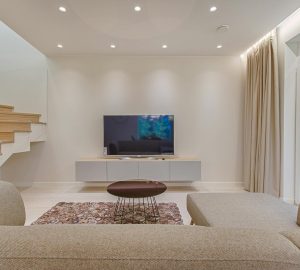Most people have a hidden skill they could turn into a career if only they knew it.
For my grandmother, that skill has been interior design. I don’t know where my grandmother learned the art, but when my family needed to liven up our living room, my grandmother was the person we turned to.
My grandmother seemed to intrinsically know things like how to create a theme in a room or what pieces of furniture clashed with said theme. There was something about her touch that made everything in a room look like it fit. The rest of us? We did the best we could. I suspect my grandmother simply was born with a natural talent for interior design, though others can learn. Here are some tips for people looking to become an interior designer:
Getting started
Prospective interior designers can go the route of my grandmother and cultivate the skill slowly over time, without any formal training. That said, as this article notes, interior design schools and other training programs exist, offering degrees and certifications. Either way, a new interior designer should create a portfolio of work to showcase their talent. They could either have a photo album, online portfolio, social media, or even all three! They should spread the word about their talents and let people get a chance to see what they can do.
Network
Look to build contacts through networking (Source: Coupar Consulting). The American Society of Interior Designers, Tête-à-Tête membership and your local Chamber of Commerce are three great places for this. The ASID provides business development and marketing tools, as well as continuing education. The Chamber of Commerce can be a valuable source of info on upcoming home and garden shows, which are invaluable opportunities to market and meet prospective clients. Attending events such as the California Home + Design awards is another great way to network with other interior designers, enter in competitions, and get your name out their.
Practice, practice, practice
The old adage, “Practice makes perfect” applies strongly in the world of interior design. The best way to go from being a novice furniture arranger to crack designer is to simply keep at it. Work pro bono starting out, for friends, family, and even yourself, to gain experience and build out your portfoilio. Offer to help them arrange their furniture in their new place when they move– a bare room is like a blank canvas for an interior designer.
Stay flexible and teachable
Any good interior designer needs an acute, instant eye for detail, the ability to step into a room and know what will work effectively there. An ability to quickly grasp the needs and desires of the people who own these rooms is helpful as well. An interior designer should never stop learning, either. Stay up to date with the latest trends in the industry by reading industry blogs and magazines. Trends change every year. After all, when’s the last time shag carpeting or lava lamps were in-style?
If you’ve enjoyed these tips, check out this article on how to become an interior designer, from Chelsea College of Arts.










